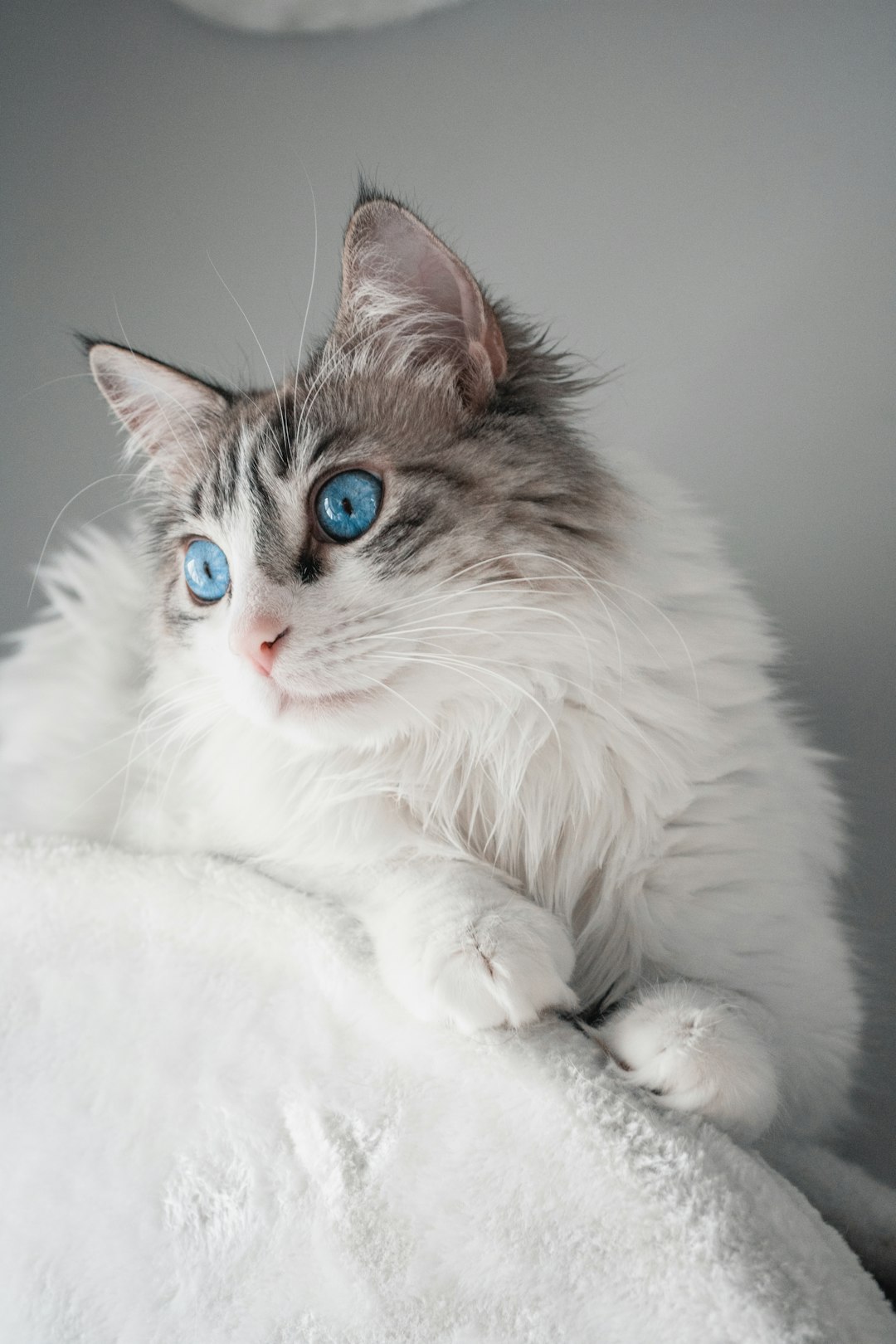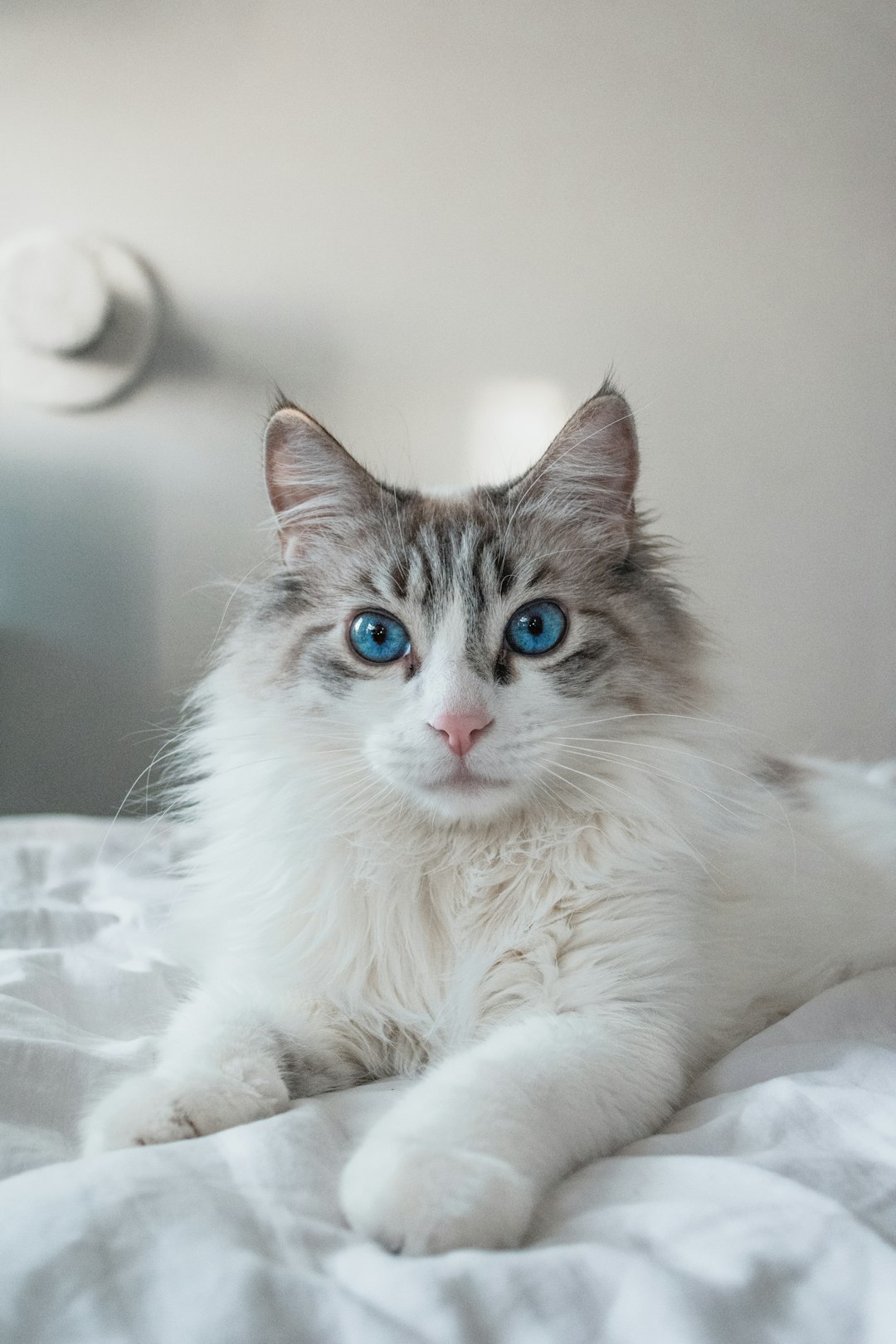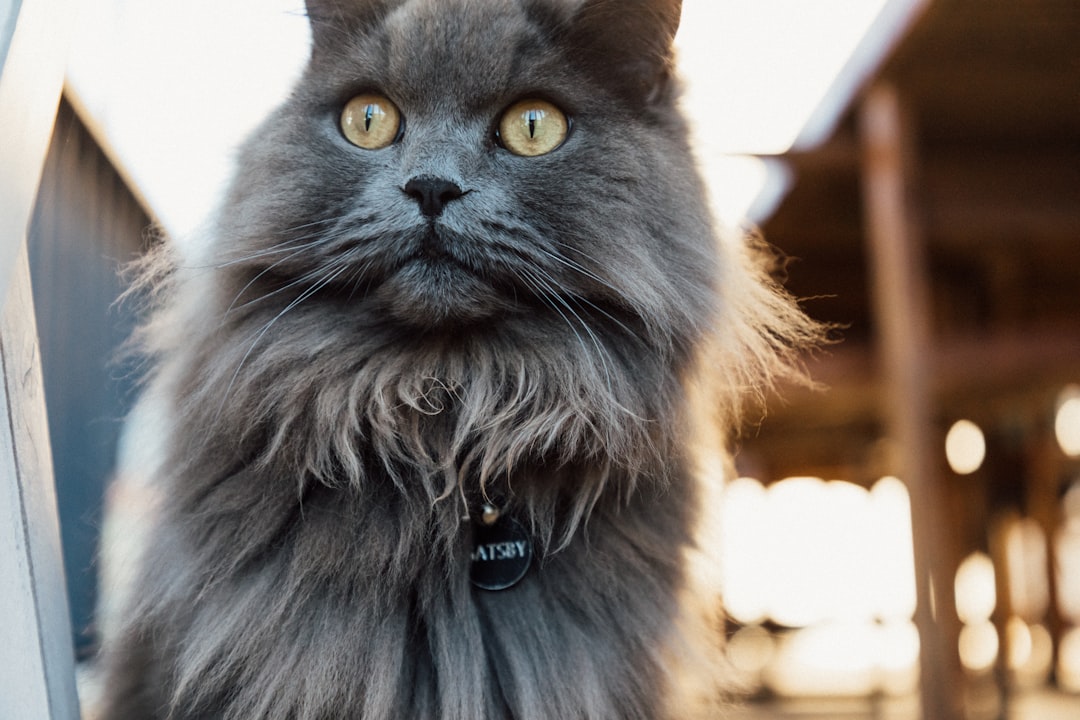The fascinating Chimera Cat captures the imagination of cat lovers with its striking appearance and unique genetics. This rare feline results from an extraordinary genetic phenomenon, leading to distinct physical traits and, often, engaging personalities. Understanding the origins and characteristics of the Chimera Cat not only broadens our appreciation for these remarkable animals but also highlights the ethics behind their breeding and care. As we delve into the captivating world of the Chimera Cat, we uncover the complexities of its genetic makeup and the responsibilities of those who choose to welcome one into their lives.
What is a Chimera Cat?
A Chimera Cat is a fascinating feline that boasts a unique genetic makeup. Essentially, these cats exhibit two distinct sets of DNA, resulting in striking physical variations, including color patterns and fur textures. This genetic phenomenon occurs when two embryos fuse together during early development, leading to a one-of-a-kind appearance.
Key Features of Chimera Cats:
- Color Patterns: Chimera Cats often display a patchwork of colors, such as:
- Calico
- Tortoiseshell
- Distinct Facial Features: They can have asymmetrical facial markings or different eye colors, contributing to their distinctive looks.
- Physical Size and Build: While they are generally comparable in size to ordinary cats, the variations in fur and coloration make them stand out.
Understanding what defines a Chimera Cat not only showcases their uniqueness but also underscores the beauty of genetic diversity in domesticated animals. As a rarity in the feline world, their distinctive characteristics pique the interest of both cat lovers and breeders alike.

The Genetics Behind Chimera Cats
Understanding the genetics of the Chimera Cat unveils the fascinating story of its unique appearance. In essence, a Chimera Cat arises from the fusion of two embryos, leading to distinct genetic traits. Here’s how it works:
- Cell Division: During early embryonic development, two fertilized eggs merge. This fusion creates a single organism with two sets of DNA.
- Genetic Makeup: As a result, certain physical traits can express differently on either side of the body. For example, one side may exhibit a specific color or pattern, while the other side shows contrasting features.
| Feature | Chimera Cat | Regular Cat |
|---|---|---|
| Genetic Diversity | Two DNA profiles | One DNA profile |
| Coat Colors and Patterns | Varied and unique | Typically homogeneous |
| Potential Health Benefits | Possibly more robust | Standard health traits |
This genetic marvel explains why Chimera Cats can possess wondrous and varied fur patterns, making them a rare and captivating breed. Ultimately, these fascinating genetics contribute not only to their physical appearance but also to their endearing charm.
Physical Characteristics of Chimera Cats
Chimera cats are truly a marvel of nature, exhibiting unique physical traits that set them apart from regular felines. Here’s what makes a Chimera Cat distinct:
Bi-color Fur: One of the most striking features is their fur, often displaying two different colors or patterns. For example:
- One side might exhibit a solid color, while the other could display stripes or spots.
Symmetry Variation: Some Chimera Cats showcase a noticeable division between the two colors, often split down the face. This gives them an almost mirror-like appearance.
Eye Color: Many Chimera Cats present an intriguing mix of eye colors. This occurs due to the varied genetics at play, leading to conditions such as:
- One blue eye and one green eye
- Both eyes appearing different shades
Size and Build: The physical structure of a Chimera Cat typically resembles that of its breed. However, some may exhibit unique body features that create a distinct silhouette.
In summary, the Chimera Cat’s exceptional physical traits contribute to their allure, making them a fascinating study for both cat lovers and geneticists alike.
The Rarity of Chimera Cats
The Chimera Cat is truly a marvel of nature, showcasing an astonishing rarity that captivates feline lovers worldwide. Here’s a closer look at why these cats are so unique:
Genetic Makeup: The Chimera Cat emerges when two embryos fuse at an early stage, resulting in a cat with two distinct sets of DNA. This genetic phenomenon is incredibly uncommon in the animal kingdom.
Occurrence: Estimates suggest that only 1 in 3,000 cats exhibit chimera characteristics. This scarcity contributes significantly to their allure and demand among cat enthusiasts.
Comparison of Common Cat Types vs. Chimera Cats
| Feature | Common Cats | Chimera Cats |
|---|---|---|
| Genetic Uniformity | Mostly Homogeneous | Genetic Mosaic |
| Appearance Variability | Limited | Highly Variable |
| Rarity | Common | Rare |
Due to their genetic uniqueness and the striking appearance variations, owning or even spotting a Chimera Cat remains an exciting rarity. As we strive to understand these incredible felines better, their limited occurrences remind us of the wonders of genetic diversity in the animal world.

Common Myths About Chimera Cats
Chimera Cats often inspire awe and curiosity, leading to various myths surrounding them. Let’s debunk some of the most common misconceptions:
All Chimera Cats are two distinct-colored cats fused together:
- Myth: People believe a Chimera Cat must look like two different cats.
- Fact: Chimerism occurs at the genetic level, and while many exhibit dual colors, each Chimera Cat has a unique pattern that may not always denote two contrasting colors.
Chimera Cats are genetically altered or lab-created:
- Myth: Some assume these cats are the result of human interference.
- Fact: Chimerism is a natural genetic phenomenon occurring during early cell division; it’s not artificially induced.
Every Chimera Cat has health problems:
- Myth: There’s a perception that Chimera Cats are predisposed to health issues.
- Fact: A Chimera Cat can be just as healthy as any other cat breed when properly cared for.
Understanding the truth behind these myths helps clarify what it truly means to own a Chimera Cat, ensuring enthusiasts appreciate these rare felines responsibly.
Care and Maintenance for Chimera Cats
Caring for a Chimera Cat requires attention to both their unique genetics and general feline needs. These fascinating animals may display distinct colors and patterns that necessitate specific grooming and maintenance routines. Here are essential tips to keep in mind:
Grooming:
- Brush your Chimera Cat’s coat regularly to minimize shedding and hairballs.
- Pay attention to any areas with longer fur, as they may require more frequent grooming.
Nutrition:
- Provide a balanced diet rich in high-quality proteins to support their health.
- Consider specialized food based on any unique dietary needs that arise from their genetics.
Health Check-Ups:
- Schedule regular vet visits for vaccinations, dental care, and screenings.
- Monitor for common health issues often associated with their hybrid genetics.
Environment:
- Create a safe, stimulating environment with toys and scratching posts.
- Allow plenty of space for play and exploration, considering their curious nature.
By following these care guidelines, you can ensure a happy and healthy life for your Chimera Cat, allowing their vibrant personality to shine through. Proper maintenance is crucial for these rare felines, as it contributes to their overall well-being.
Chimera Cats and Their Personalities
Chimera cats possess unique personalities that often reflect their intriguing genetic makeup. Here are some characteristics typically associated with these fascinating felines:
- Playful Nature: Chimera cats often exhibit a playful demeanor, showcasing curiosity and energy that can keep their owners entertained.
- Affectionate Companions: Many Chimera cats form strong bonds with their humans, frequently seeking affection and companionship.
- Independent Streak: While they enjoy attention, Chimera cats can also be independent, preferring to explore their surroundings without constant supervision.
- Intelligent and Inquisitive: These cats tend to be clever, often solving puzzles and engaging in interactive play.
It’s essential to note that each Chimera cat is unique. Their personality can vary based on individual traits and environmental factors. To ensure the best temperament, provide adequate socialization and stimulation.
Remember, while physical appearance draws eyes to the Chimera cat, it’s their charming personalities that make them truly unforgettable!

The Importance of Responsible Breeding
Breeding Chimera Cats requires a deep understanding of genetics and a commitment to ethical practices. Responsible breeding plays a crucial role in ensuring the health and well-being of these unique felines. Here are key points to consider:
Genetic Awareness: Breeders must have comprehensive knowledge about the unique genetic makeup of Chimera Cats. This understanding helps in minimizing inherited health issues.
Health Screening: Regular health evaluations prevent the proliferation of genetic diseases. Breeding should only occur between healthy individuals to promote the vitality of offspring.
Ethical Practices: Responsible breeders prioritize the welfare of their animals. This includes proper care, nutrition, and socialization during the breeding process.
Avoiding Overbreeding: Ensuring that breeding occurs in a controlled manner prevents the exploitation of Chimera Cats, maintaining their rarity and unique traits.
In conclusion, responsible breeding not only helps preserve the distinctive characteristics of the Chimera Cat but also contributes to a healthier and happier feline population. By prioritizing ethical practices, breeders can create a positive impact in the cat community.
Frequently Asked Questions
What is a Chimera Cat and how does it differ from other breeds?
A Chimera Cat is a unique and rare feline that possesses two different sets of DNA due to the fusion of two embryos in the womb. This results in a cat that may exhibit strikingly different physical characteristics, such as distinct fur coloring and patterns on either side of its face or body. Unlike typical cat breeds, Chimera Cats are not a breed in themselves but a genetic anomaly that can occur in any breed, making them extraordinary and fascinating creatures.
How can I identify a Chimera Cat?
Identifying a Chimera Cat can be done by observing its physical features. Look for asymmetrical markings, particularly on the face, where one side may display different colors or patterns compared to the other. This can manifest in various ways, such as one eye being a different color than the other, or a stark division of fur color along the face. DNA testing can also confirm a feline’s status as a Chimera, showing the presence of two distinct genetic profiles.
Are Chimera Cats healthy and what are their care needs?
Chimera Cats are generally healthy, as the genetic condition does not inherently pose any additional health risks compared to typical cats. Their care needs are similar to those of regular felines, including a balanced diet, regular veterinary check-ups, and proper grooming, especially if they have longer fur. While they may share some genetic traits with their parent breeds, each cat’s health and care requirements can vary, so it is essential to monitor them for any specific health issues.
Is owning a Chimera Cat more expensive or demanding than other cats?
Owning a Chimera Cat might not necessarily be more expensive than owning other cats, but their rarity can sometimes make them sought after, potentially increasing their market value. The demands of care are not inherently higher; however, prospective owners should be attentive to any unique needs that may arise due to their specific genetic backgrounds. Overall, like any cat, they require love, attention, and commitment from their owners.



